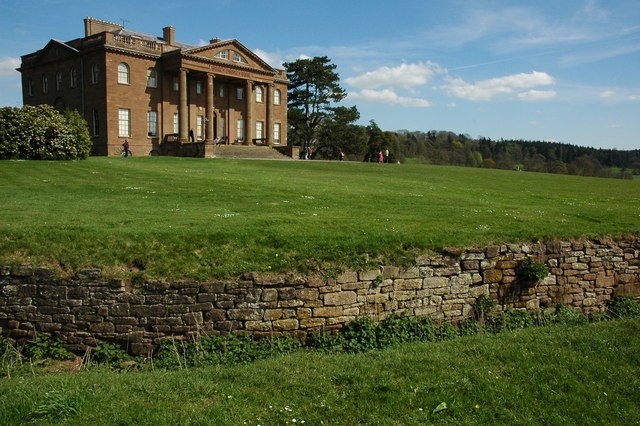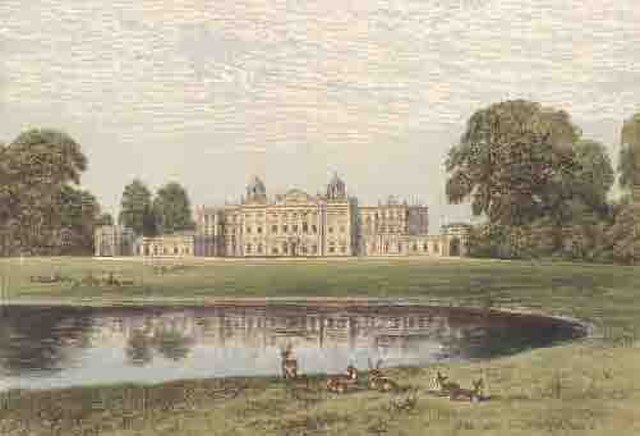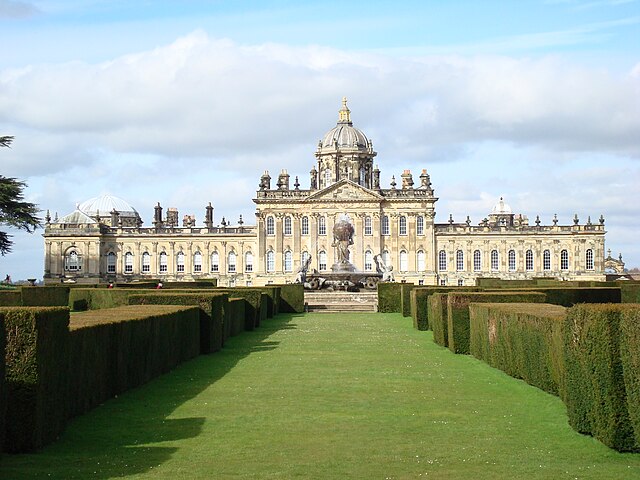Lancelot Brown, more commonly known as Capability Brown, was an English gardener and landscape architect, who remains the most famous figure in the history of the English landscape garden style. He is remembered as "the last of the great English 18th-century artists to be accorded his due" and "England's greatest gardener".
A portrait painting of Brown painted by Nathaniel Dance, c. 1773
Ha-ha and house at Berrington Hall in Herefordshire, Brown's last big project, a new-build designed by his son-in-law, placed to exploit views in two directions.
Badminton House in Gloucestershire: features of the Brownian landscape at full maturity in the 19th century
Brown's Pond at Sandleford, Berkshire. One of a string of former priory fish ponds adapted by Brown who was at Sandleford on behalf of Elizabeth Montagu from 1781.
The English landscape garden, also called English landscape park or simply the English garden, is a style of "landscape" garden which emerged in England in the early 18th century, and spread across Europe, replacing the more formal, symmetrical French formal garden which had emerged in the 17th century as the principal gardening style of Europe. The English garden presented an idealized view of nature. Created and pioneered by William Kent and others, the "informal" garden style originated as a revolt against the architectural garden and drew inspiration from landscape paintings by Salvator Rosa, Claude Lorrain, and Nicolas Poussin.
Rotunda at Stowe Gardens (1730-38)
The paintings of Claude Lorrain inspired Stourhead and other English landscape gardens.
Castle Howard (1699–1712), a predecessor of the English garden modelled on the gardens of Versailles
Ionic Temple at Chiswick House in west London








